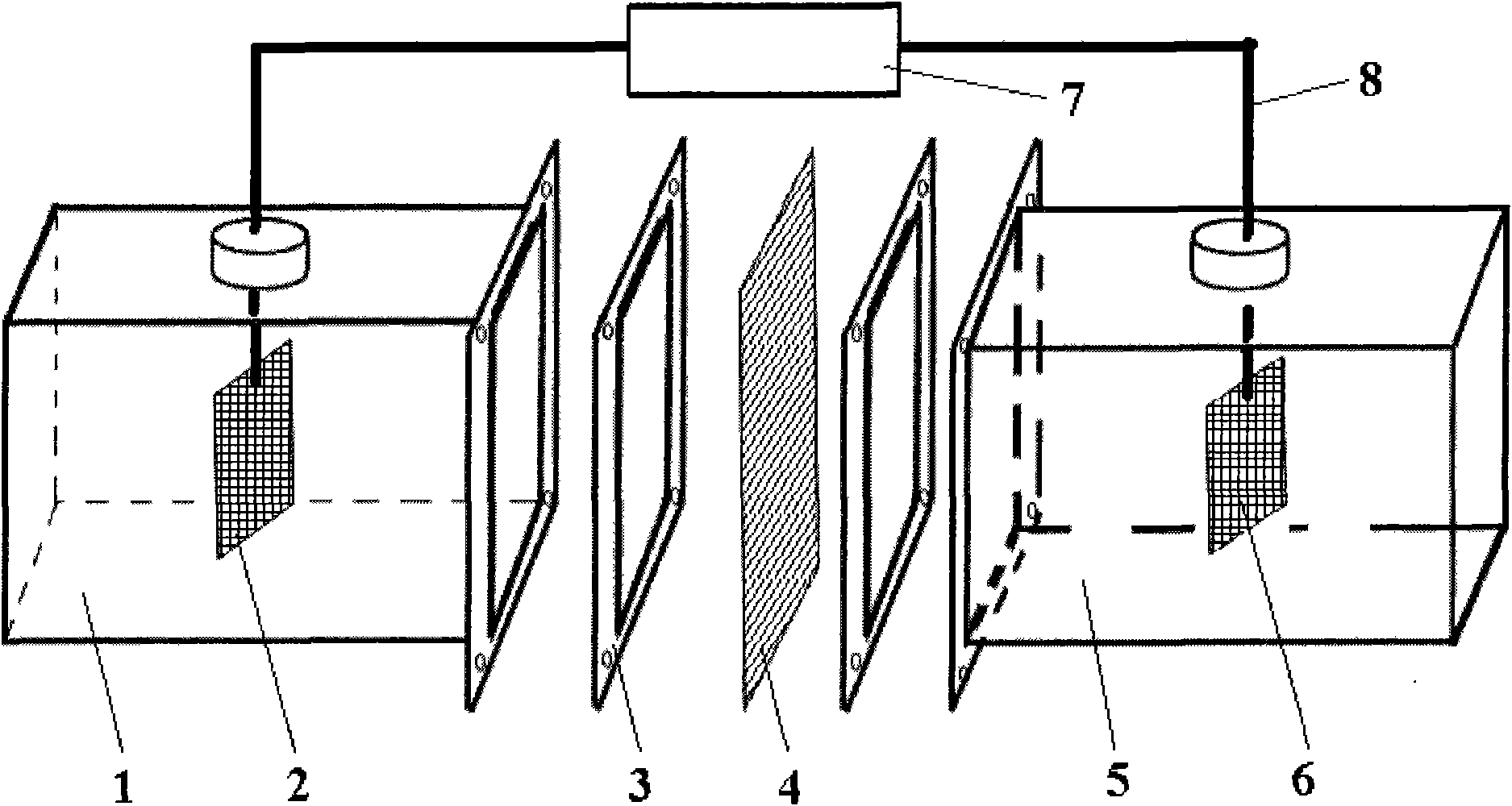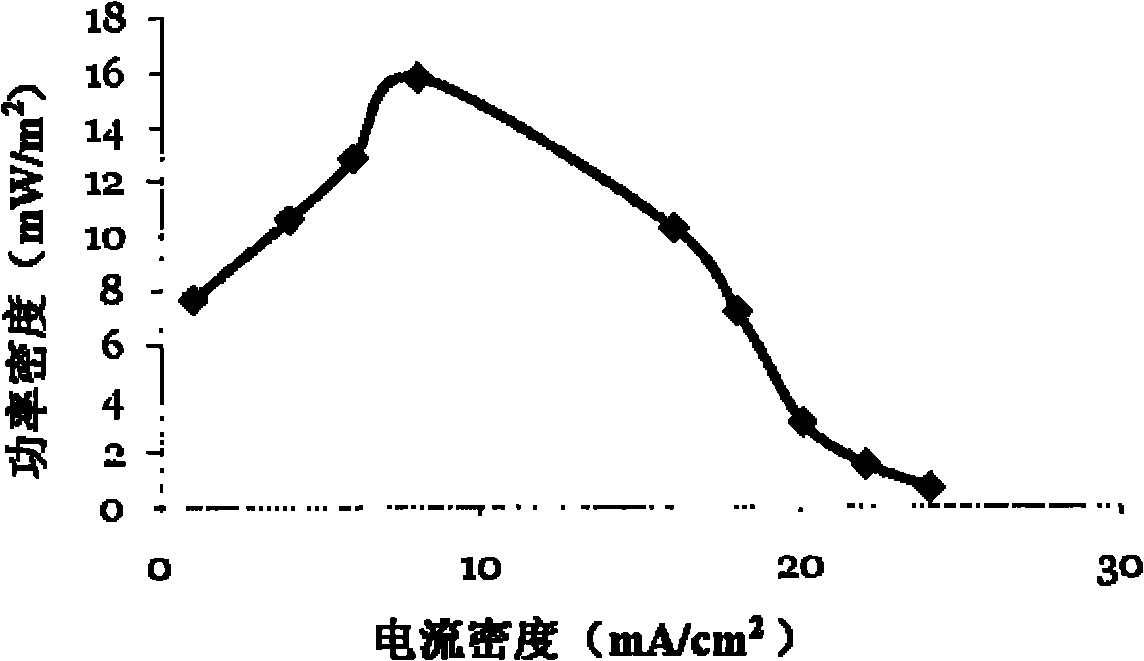Green algae biological fuel cell generating power on basis of photosynthesis
A biofuel cell and photosynthesis technology, applied in biochemical fuel cells, light radiation generators, generators/motors, etc.
- Summary
- Abstract
- Description
- Claims
- Application Information
AI Technical Summary
Problems solved by technology
Method used
Image
Examples
Embodiment 1
[0035] Such as figure 1 As shown, the green algae biofuel cell described in the first embodiment of the present invention includes a light-transmitting anode cell 1 of the green algae culture solution and a cathode cell 5 rich in oxygen or adding an oxidant solution, and a proton exchange membrane is used between the two cells 4, and sealed by the gasket 3, the anode 2 and the cathode 6 are respectively fixed inside the cathode and anode pools; the anode pool is isolated from the air, and the interior is an anaerobic environment, with hydrogen-producing green algae as the system green algae material, using indirect The hydrogen production regulation technology is adopted, and an electron transfer mediator is added to the system, so that the electrons generated by photosynthesis can combine with the electron mediator before reaching the hydrogenase through the electron transport chain, and the electron mediator releases electrons at the anode electrode and passes through the wir...
Embodiment 2
[0042] The working process is as described in Example 1, but the freshwater Chlamydomonas algae solution is added to the anode pool, and the freshwater Chlamydomonas is used as the system green algae material, and the sulfur-free control technology is adopted, that is, the sulfur-free TAP medium is used. Its implementation effect is as follows image 3 shown.
PUM
| Property | Measurement | Unit |
|---|---|---|
| electrical resistance | aaaaa | aaaaa |
Abstract
Description
Claims
Application Information
 Login to View More
Login to View More - R&D
- Intellectual Property
- Life Sciences
- Materials
- Tech Scout
- Unparalleled Data Quality
- Higher Quality Content
- 60% Fewer Hallucinations
Browse by: Latest US Patents, China's latest patents, Technical Efficacy Thesaurus, Application Domain, Technology Topic, Popular Technical Reports.
© 2025 PatSnap. All rights reserved.Legal|Privacy policy|Modern Slavery Act Transparency Statement|Sitemap|About US| Contact US: help@patsnap.com



